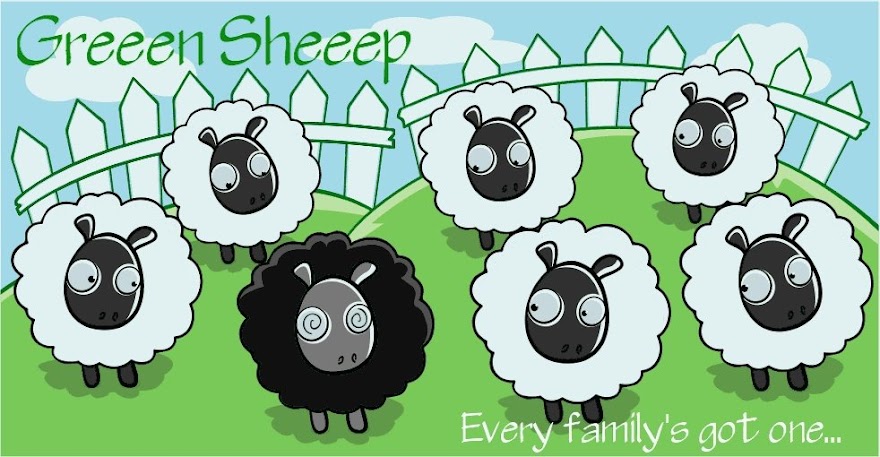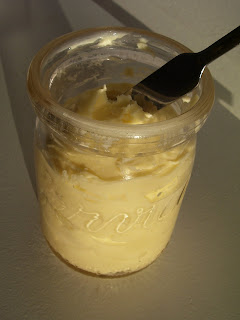As I walk into the grocery store I cannot help but notice all the carts coming out overflowing with paper and plastic bags.
My mind recalls the day when I opened the closet door and was engulfed in an avalanche of plastic shopping bags. I drop my reusable bags in a cart and quickly breeze by the aroma-less bread in its plastic prison.
My mind drifts to the heavenly scent wafting from my kitchen as a fresh baked loaf is pulled from the oven. I arrive a my first stop, organic produce. Ugh, more plastic.
Why must vegetables be suffocated by plastic? I
want to smell them.
My mind makes short work of compiling a seed list and adds food preservation to my 2009 to do list. While I load up my
string bag, the lady next to me rips off one of those flimsy plastic produce bags and puts in an onion. One onion. Rips off another bag and puts in a red pepper. One pepper. When she reaches for the third bag I bite my tongue and make a graceful exit.
My mind adds plastic produce bags to my pet peeve list and files it away in future blog posts.
I enter the meat department and search for some grass fed beef.
My mind instantly conjures up an image I saw recently of a herd of cows all pooping. Pooping at the same time. Nothing but butts, pooping. It was like a methane fountain of poo. Gross! I look at my list, thankfully I do not need much since we are having meatless meals twice this week. I pick up a pound wrapped in plastic on a styrofoam tray.
My mind thinks back to Beth's post about when presenting her butcher with a reusable container, a journalist asked, "Do you ever get embarrassed?". At that moment I realize I am embarrassed for buying the plastic wrapped beef on a sytrofoam tray and decide to start bringing my own container to buy from the meat counter.
Making my way around the perimeter of the store I move on to the dairy section. Pathetically excited to skip the five dollar pound of organic butter, I reach for the glass bottle of cream and look forward to
making butter with my daughter.
I start to drool as my mind relives the fresh buttermilk pancakes we enjoyed for breakfast. Also on my list is yogurt and sour cream. Sighing, I add them to the cart.
My mind adds them to the tally of the non-recyclable tower in my basement awaiting some future use. Learning to make my own also goes on my 2009 to do list. A man reaches over me for a styrofoam carton of conventional eggs.
My mind replays the scene from The Meatrix where chickens are being de-beaked so they don't peck each other to death living in such close quarters. I pop open a carton to ensure the beautiful brown, free range, organic miracle nuggets inside are all intact before placing them in my cart.
My mind goes back to the tower in my basement. Next to it is a stack of cardboard egg cartons happily awaiting Spring, when they will be filled with seedlings to be transplanted into my square foot garden. Milk is the last dairy item on my list. I grab three gallons of
rBGH free milk and make room for them in my cart.
Thankful my state still allows rBGH free labeling, my mind wonders what I will do if the labeling becomes outlawed? rBGH free milk already costs more, but organic milk costs twice as much. I cannot afford organic.
My mind goes back to a time I believed this. Yet, a family of four living on one income we eat nearly all organic.
My mind thinks of the all the receipts I have kept for the past three years with the intent of developing a budget. I decide to add up all those receipts to see just what we were spending eating conventional compared to organic. Perhaps I
can afford organic.
In the bulk goods section I have a lengthy list: flour, sugar, salt, pepper, oats, baking powder, cornstarch, dill, rosemary, peanut butter, honey, rice, my favorite chocolate covered raisins (
damn no grazing sign!), and
Dr. Bronner's. One by one I fill my containers from home and check an item off my list. Reused spaghetti sauce jars, a yogurt container from the tower in my basement,
a drawstring bag made from an old camisole, whatever; all with their tare weight recorded in permanent marker on the bottom. I fill the container, insert the appropriate PLU twist tie from a previous shopping trip, and place the item in my cart. Happy to be making use of the stockpile I could not bear to send to the landfill; someone next to me grabs a plastic bag off the shelf, fills it pasta, grabs a twist tie, records the PLU on it and goes about their way.
My mind wonders why bother shopping in bulk to avoid
the packaging if you are just going to create
unnecessary packaging by taking it home in a plastic bag? #3 on my pet peeve list, bulk goods plastic bags.
My last stop on this grocery trip is the checkout. I file in line like cattle being herded for slaughter. Waiting my turn I read the tabloid headlines, fight the urge to buy that magazine with all the wonderful recipes in it, compare contents of shopping carts, blush when someone oddly examines mine, and pretend to look at my list whilst avoiding the judgmental gazes.
My mind delivers a pang of guilt as I recall I used to be on the sending end of those judgmental gazes. "Hippy." "Freak." All to quick to stereotype. How wrong I was.
The cashier greets me with the ubiquitous, "Did you find everything you were looking for?". Hmm... I will not go there. She rings everything through and gives me my total, nearly the same as always, no matter what I buy. I hand over my reusable bags and the bagger obligingly fills them. While fishing for my keys I do not notice he slips my grass fed beef into a plastic bag before placing it into my cloth bag. Oh bother. Pet peeve #4.
My mind asks, "Why do I even try?".

This is my submission for the January APLS Carnival on "mind games". Read all submissions January 22 at VWXYNot?



































































